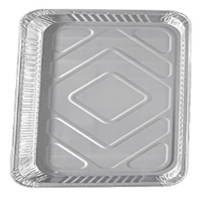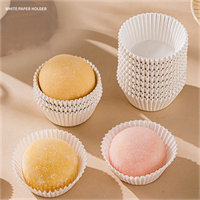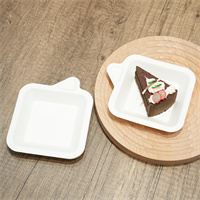In the quest for sustainable and eco-friendly alternatives to traditional plastic and Styrofoam food packaging, sugarcane bagasse has emerged as a frontrunner. This remarkable material not only helps reduce waste but also minimizes our carbon footprint. But what exactly is sugarcane bagasse, and how does it make its way from the farm to our tables? Let's take a detailed look at the lifecycle of sugarcane bagasse and its transformation into disposable food items.
1. The Origins: Sugarcane Fields
The journey of sugarcane bagasse begins in the lush, expansive fields where sugarcane is cultivated. Sugarcane is a tropical and subtropical crop that thrives in warm climates with abundant rainfall. Countries like Brazil, India, China, and Thailand are among the largest producers of sugarcane. The crop is typically harvested once a year, and the process involves cutting the mature stalks close to the ground.
2. Sugar Extraction: The Milling Process
Once harvested, the sugarcane stalks are transported to mills where the primary goal is to extract sugar. The stalks are crushed to extract the juice, which is then processed to produce sugar. This extraction process leaves behind a fibrous residue known as bagasse. Historically, bagasse was considered a waste byproduct, but its potential as a valuable resource has been increasingly recognized.
3. Bagasse Processing: From Waste to Resource
The bagasse is collected and dried to reduce its moisture content. This dried bagasse is then processed to create a pulp, which can be molded into various shapes and forms. The pulp is mixed with water and other natural fibers to enhance its strength and durability. This mixture is then subjected to high temperatures and pressure to form sturdy, biodegradable food packaging products.
4. Manufacturing: Creating Disposable Food Items
The processed bagasse pulp is molded into a wide range of disposable food items, including plates, bowls, cups, and takeout containers. These products are designed to be both functional and environmentally friendly. The manufacturing process ensures that the final products are heat-resistant, microwave-safe, and capable of holding both hot and cold foods without compromising their integrity.
5. Distribution: Bringing Bagasse Products to Market
Once the disposable food items are manufactured, they are packaged and distributed to retailers, restaurants, and consumers. Companies that prioritize sustainability often choose bagasse products for their eco-friendly properties. These products are increasingly available in supermarkets, online stores, and food service establishments, making it easier for consumers to make environmentally conscious choices.
6. End of Life: Composting and Decomposition
One of the most significant advantages of sugarcane bagasse products is their ability to decompose naturally. Unlike plastic and Styrofoam, which can take hundreds of years to break down, bagasse products can be composted and returned to the earth within a few months. This composting process enriches the soil, closing the loop in the lifecycle of sugarcane bagasse and contributing to a more sustainable environment.
Conclusion: A Sustainable Choice
The journey of sugarcane bagasse from farm to table is a testament to the potential of sustainable materials in reducing our environmental impact. By choosing bagasse-based disposable food items, we can support a circular economy, reduce waste, and minimize our carbon footprint. As consumers become more aware of the environmental consequences of their choices, the demand for eco-friendly alternatives like sugarcane bagasse will continue to grow, paving the way for a greener future.
Comparing Sugarcane Bagasse to Traditional Plastic: Which is Better for the Environment?
In recent years, the conversation around sustainable materials has gained significant momentum. As consumers become more environmentally conscious, businesses are seeking alternatives to traditional plastics. One such alternative that has garnered attention is sugarcane bagasse. But how does it stack up against traditional plastic in terms of environmental impact, cost, and usability? Let's dive into a comparative analysis to find out.
Environmental Impact
Sugarcane Bagasse:
Sugarcane bagasse is the fibrous residue left after extracting juice from sugarcane. Traditionally considered agricultural waste, it has found a new lease on life as a raw material for disposable food items. The environmental benefits of sugarcane bagasse are numerous:
- Biodegradability:
Unlike traditional plastics, which can take hundreds of years to decompose, sugarcane bagasse products are biodegradable and compostable. They break down naturally within 60-90 days in a composting environment.
- Renewable Resource:
Sugarcane is a renewable resource that can be harvested annually. The use of bagasse helps in reducing agricultural waste and promotes a circular economy.
- Lower Carbon Footprint:
The production of bagasse-based products generally emits fewer greenhouse gases compared to traditional plastic manufacturing. Additionally, sugarcane plants absorb CO2 during their growth, further offsetting carbon emissions.
Traditional Plastic:
Traditional plastics, primarily derived from petroleum, have long been criticized for their environmental impact:
- Non-Biodegradability: Most traditional plastics are not biodegradable, leading to long-term pollution in landfills and oceans. They can take up to 1,000 years to decompose.
- Finite Resource:
Plastics are made from fossil fuels, a non-renewable resource. The extraction and processing of petroleum contribute to environmental degradation and climate change.
- High Carbon Footprint:
The production of plastic is energy-intensive and releases significant amounts of CO2 and other greenhouse gases into the atmosphere.
Cost
Sugarcane Bagasse:
- Production Costs: The initial production costs for sugarcane bagasse products can be higher than traditional plastics due to the relatively new technology and smaller scale of production. However, as demand and production scale increase, costs are expected to decrease.
- Economic Incentives:
Many governments offer subsidies and incentives for using eco-friendly materials, which can offset some of the higher initial costs.
Traditional Plastic:
- Production Costs:
Traditional plastics benefit from established manufacturing processes and economies of scale, making them cheaper to produce.
- Hidden Costs: While the upfront costs are lower, the environmental cleanup and health costs associated with plastic pollution are significant and often not accounted for in the price.
Usability
Sugarcane Bagasse:
- Durability: Bagasse products are sturdy and can withstand high temperatures, making them suitable for both hot and cold food items.
- Versatility: They can be molded into various shapes and sizes, offering flexibility in design.
- Aesthetic Appeal: Bagasse products have a natural, earthy look that appeals to eco-conscious consumers.
Traditional Plastic:
- Durability: Plastics are highly durable and can be engineered to meet specific needs, such as flexibility or rigidity.
- Versatility: Plastics can be easily molded into any shape and are available in a wide range of colors and finishes.
- Perception: Despite their environmental drawbacks, plastics are often perceived as more reliable and familiar to consumers.
Conclusion
When comparing sugarcane bagasse to traditional plastic, it's clear that bagasse offers significant environmental benefits. It is biodegradable, made from a renewable resource, and has a lower carbon footprint. While the initial costs may be higher, the long-term environmental and economic benefits make it a compelling alternative to traditional plastics.
As consumers and businesses continue to prioritize sustainability, the shift towards materials like sugarcane bagasse is not just a trend but a necessary step towards a more sustainable future. By choosing bagasse over traditional plastic, we can reduce our environmental impact and contribute to a healthier planet.
Feel free to share your thoughts and experiences with sugarcane bagasse and traditional plastics in the comments below. Let's continue the conversation on sustainable alternatives and make informed choices for a better tomorrow!































